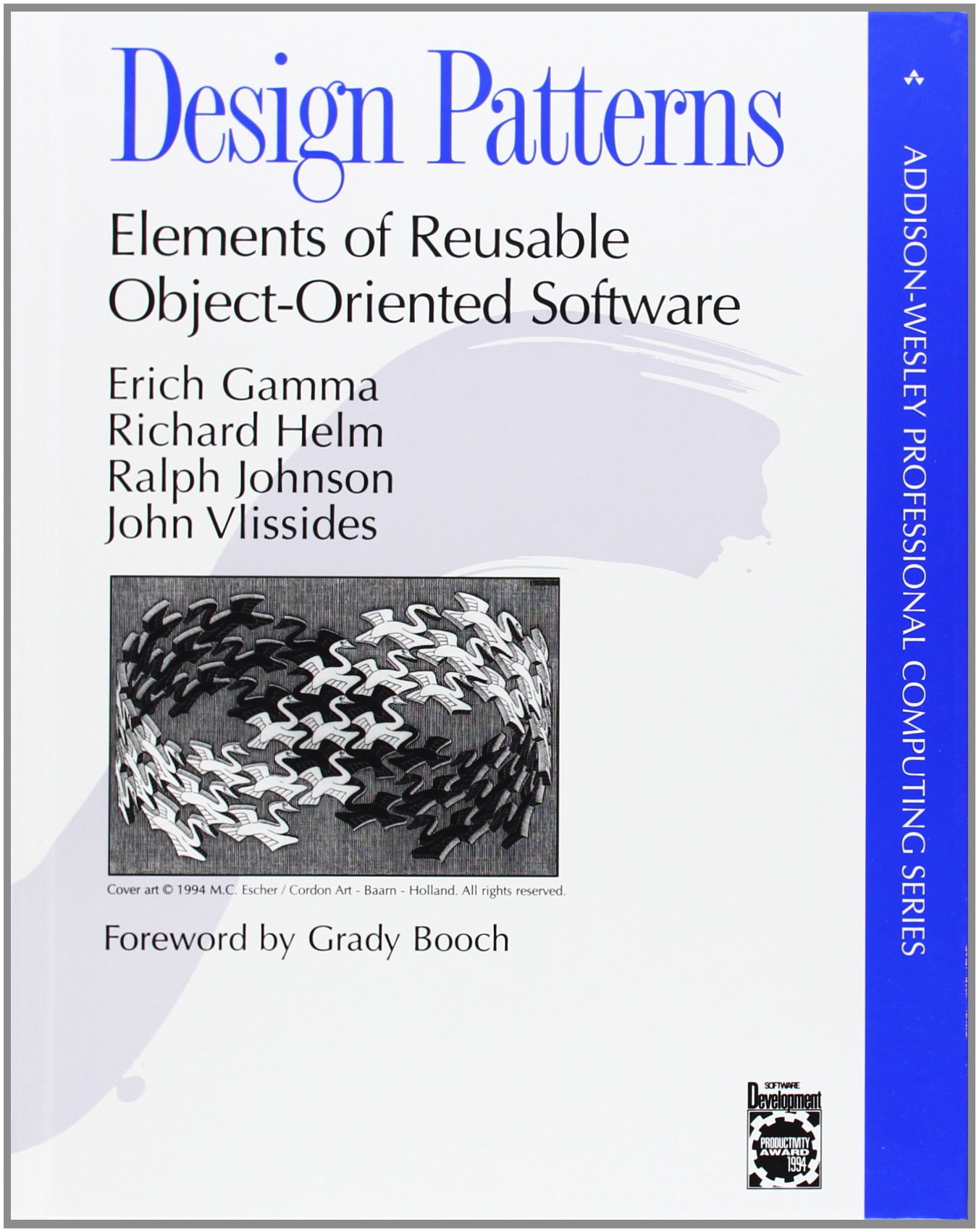C# - Gang Of Four - Design Patterns, Elements Of Reusable Object Oriented Software pdf free
Par ahl jose le jeudi, décembre 29 2016, 22:57 - Lien permanent
C# - Gang Of Four - Design Patterns, Elements Of Reusable Object Oriented Software. Erich Gamma, John M. Vlissides, Ralph Johnson, Richard Helm

C.Gang.Of.Four.Design.Patterns.Elements.Of.Reusable.Object.Oriented.Software.pdf
ISBN: 0201634988,9780201634983 | 551 pages | 14 Mb

C# - Gang Of Four - Design Patterns, Elements Of Reusable Object Oriented Software Erich Gamma, John M. Vlissides, Ralph Johnson, Richard Helm
Publisher: Addison-Wesley Professional
GOF patterns is usually referred to the four authors of Design Patterns (Elements of Reusable Object Oriented Software). Processes interact with eachother via interprocess . Access modifiers (private, public and protected) are some examples of abstraction in c#. Here below is what I call "My design patterns table". My own case was grounded in Fortran II and meandered through BASIC, assembly language, FORTH, and then on to Internet languages like JavaScript, PHP, and C#. It was subsequently described in depth in the highly influential “Design Patterns: Elements of Reusable Object-Oriented Software” [2], a.k.a. The “Gang of Four” book, in 1994. As I venture further in to disciplines other than Lotus Domino, such as C#, I find myself struggling with some of the base concepts of coding. Encapsulation: Encapsulation is the process of bundling Explain the GOF design patterns? I'm still working my way through the early stages of the Gang of Four's Design Patterns: Elements of Reusable Object-Oriented Software, and this time I went to. MVC went on to be described in depth in “Design Patterns: Elements of Reusable Object-Oriented Software” (The "GoF" or “Gang of Four” book) in 1994, which played a role in popularizing its use. A process contains one or more threads depending on the process design. Gamma, Helm, Johnson, Vlissides (1994). Well I had to buy 'Design patterns : elements of reusable object-oriented software' as part of the reading list back at uni (over 10 years ago), and have since always referred back to it: For the record, there is considerable disagreement over whether the "Gang of Four" book is really good, or astoundingly bad, for programmers. Without a doubt, the brightest In the Foreword to Design Patterns: Elements of Reusable Object-Oriented Software (Addison-Wesley) by GoF, Grady Booch notes that he judges OOP programs by the attention developers pay to the common collaboration among objects. Code Complete: A Practical Handbook of Software Construction.